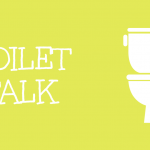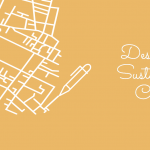When I visited my family in Surrey, BC over the weekend, I was struck by the rapid development in the area. Surrey has become the second largest city in BC and is still rapidly growing. This is reflective of a global trend of people moving to live in cities – over two thirds of the world’s population will be living in cities by 2050.
With the rapid growth of cities comes the opportunity for sustainable design – to build sustainability right into the fabric of cities. Purposeful urban design is essential for providing the infrastructure to facilitate and redefine a more sustainable lifestyle. One particular area that caught my attention was designing for more sustainable transportation modes.
One example is Copenhagen, which found that more people were willing to switch to cycling instead of driving if their bike route was faster and had less traffic lights. As a result, the city is building bike super highways with timed traffic lights and bike-safe intersections in order to facilitate a cycling lifestyle – their plan is build a network of 28 Cycle Super Highways, covering a total of 500 km. The network is expected to improve health and reduce public healthcare costs by EUR 40.3 million, as well as reducing congestion and pollution.
When it comes to Vancouver, I was surprised to find out that we are actually considered a huge success when in comes to urban design that encourages people to use alternative methods of transportation. In fact, 50% of Vancouver commuters don’t use cars – significantly higher than other North American cities of comparable size.
Our downtown urban design mixes residential and commercial areas to reduce the need for cars. Our transit system includes the longest fully automated metro system in the world, and is ranked the second best transit system in all of Canada. Since 2008, Vancouver shifted their strategy to encouraging cycling as a transportation option, and invested heavily in bike lanes and a bike share program to make cycling accessible to all ages and abilities. Vancouver has also made investments in walkable public spaces and pedestrian walkways. Overall, Vancouver’s commitment to sustainable transportation has designed the infrastructure to give residents multiple alternative options to cars and making green commutes a new social norm.
How else do you think cities can use urban design to drive sustainable transportation choices? How is your hometown using design to encouraging sustainable habits?
Other Sources
Inhabitat – Urban Systems
Devex – Connected & Sustainable Cities
New Yorker – Vertical Urban Farming







victoriayang
March 11, 2017 — 11:59 am
I just found a great article about the environmentally and socially sustainable city design for Serena del Mar in Colombia if you want to explore this topic further: https://www.1843magazine.com/design/the-daily/a-city-to-grow-into
Rachel Li
March 21, 2017 — 11:09 am
Hi Victoria,
Great that you mentioned Copenhagen. When I was living there, I definitely embraced the biking lifestyle. Copenhagen’s topography is much flatter than Vancouver which makes biking much easier. The lack of widely paved roads is also due to the limited space available in historical old towns. The density in many European cities also creates a need for more nimble transport options. If you look at car sizes, Fiat, an Italian brand for example is much smaller, designed to maneuver around narrow, hilly terrain. For spread out North American cities, attention is usually turned to the downtown core rather than neighbouring suburbs. I think making public transit more accessible to these suburbs will definitely drive greener commutes. The recent Ever Green line extension to Coquitlam is an example. Another option that I looked into is car sharing and ride share services. Feel free to check out my blogpost on Uber and the sharing economy!.
victoriayang
April 9, 2017 — 5:23 pm
Thanks for your thoughts on this – the concentration of biking commuters around Vancouver’s more densely populated downtown core is definitely something I’ve noticed in comparison to the super spread out suburbs of where I grew up in Surrey. My parents didn’t make it a habit to bike to work because of the hills and distance, so encouraging green transportation in Surrey would definitely require a focus on accessible public transit / car sharing services. It’s a big topic in Surrey, so it’ll be interesting to see which one becomes the more popular option as they continue to develop their transportation infrastructure.
Hussam Zbeeb
April 4, 2017 — 7:32 pm
I really enjoyed your blog post – especially the focus on integrating sustainability with design. What I found particularly surprising when I moved here was the extent that some people were willing to bike to and from different places. When speaking to these people about their transportation habits, it was made evident by several people that they choose to do so as a form of physical activity. With this comes a unique opportunity of focusing the benefits of more sustainable transportation practices on the actual person themselves (i.e. increased wellbeing) rather than shifting the benefits away from the person and focusing on the planet (which we’ve learned this term isn’t sufficient on its own in enacting large changes).
victoriayang
April 9, 2017 — 5:12 pm
When I started to come to UBC I was also surprised by the number of people who biked to school or around campus. I even had a classmate who would bike an hour from Burnaby to get to UBC – sometimes even beating people who took the bus! I always find it interesting to ask about what make people decide to bike, and I’ve heard it’s a combination of factors such as the affordability, physical benefits, environmental benefits, the enjoyment of our city landscape, and more. It’ll be interesting to see how Vancouver continues to evolve as a sustainable city.
rachel01tb
April 10, 2017 — 9:58 am
My hometown Seattle quickly came to mind when I read the title of your post. Since I can remember, the city has been retrofitting its current system with a series of improvements: Link Light Rail, RapidRide, etc. However, the layout of the city doesn’t support easy, quick, public transportation. In fact, it doesn’t begin to compare to Vancouver. To get home from high school, for example, I would have to take 3 busses just to travel 10 minutes driving time. This inefficiency is changing, but its not perfect. Designing cities to support sustainable modes of transportation is so important. If the bus was easier to use, I would take it- just as I do here in Vancouver.